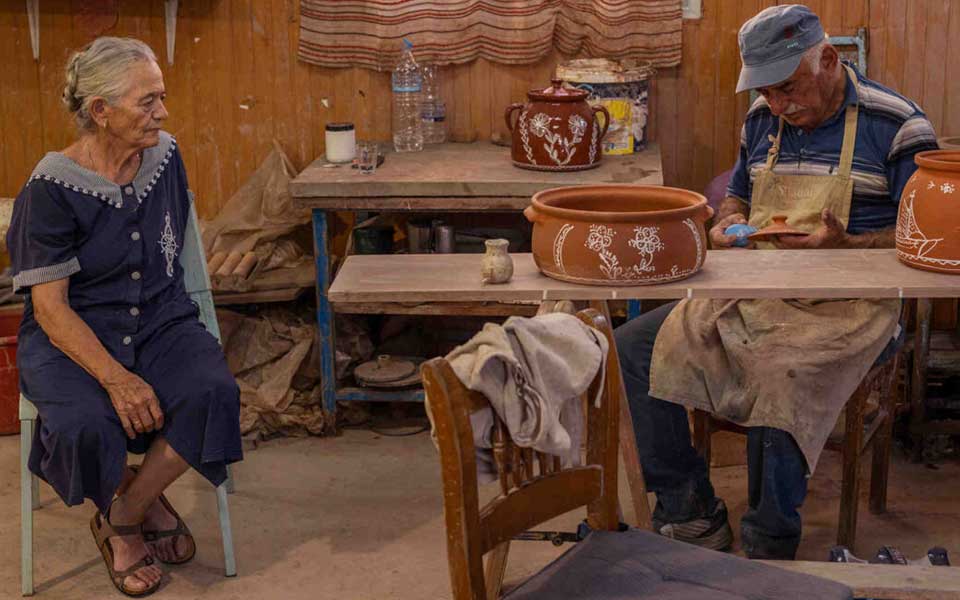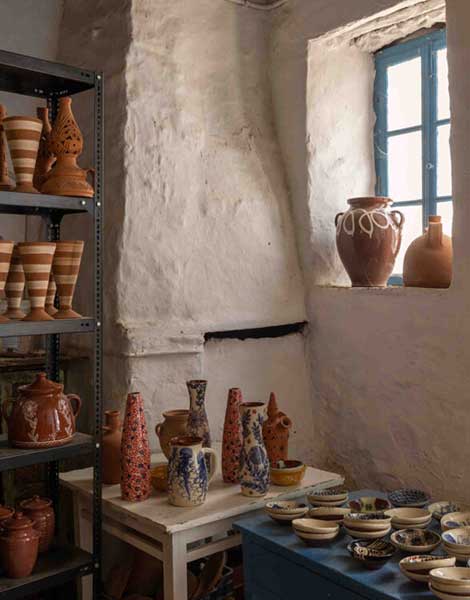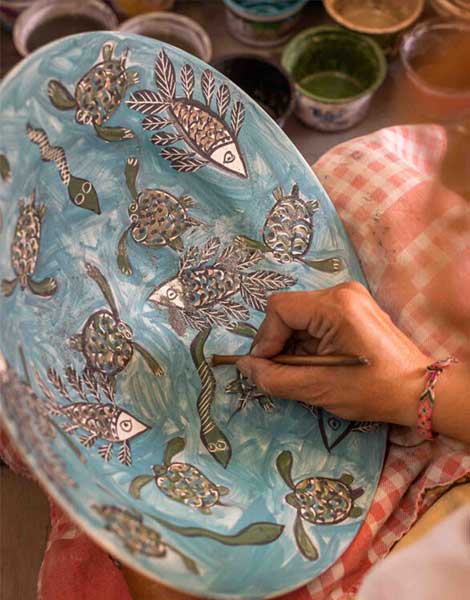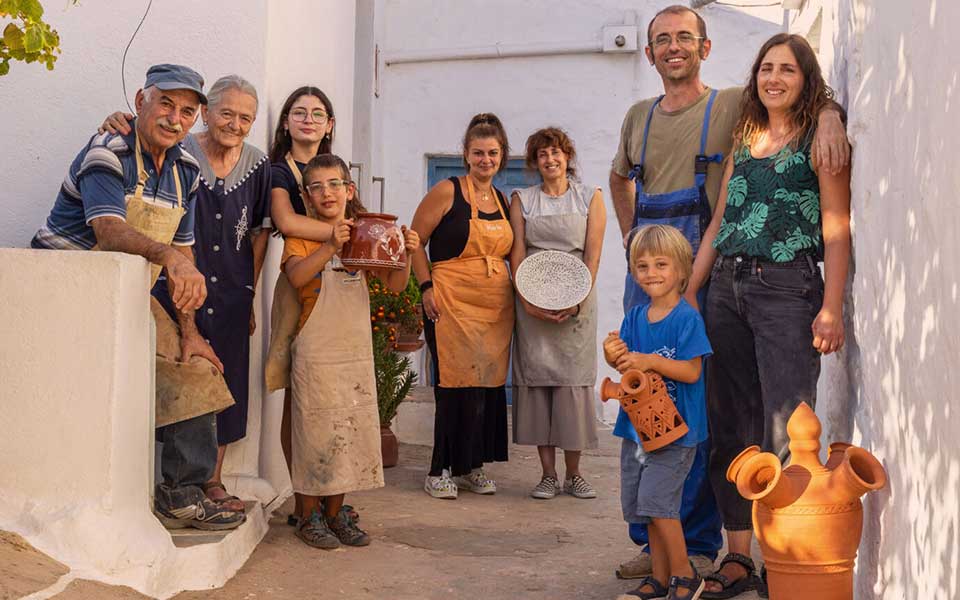By Christina Tzialla
It’s mid-July and the island is bustling with visitors, but up in Artemonas, in the area of Aghia Anna, everything is much quieter. We park outside the settlement and walk only a short distance before we reach the sign that reads “Lembesis Ceramics.” It was to this spot that Giannis Lembesis moved the pottery workshop originally established by his grandfather in Cheronissos around 1910. Today, Giannis’ son Nikos has taken over, although his father still helps him, of course.
Stepping into the courtyard, we peek through open doors. Three women – Betty, Vasiliki and Margarita – have been painting items since morning, carefully putting petals onto cups and plates in front of them. With a slight brushstroke, a petal becomes a fish and a plate becomes the seabed. Behind them, the potter’s wheels remain empty for now. Nikos, a calm and assured artist, is in the other room working on glazing.

© Christina Georgiadou

© Christina Georgiadou

© Christina Georgiadou
We descend two steps and enter the dimly lit storage room, where the old olive press still stands, surrounded by shelves filled with ceramics ready for sale. In the twilight, strange birds with red beaks and blue feathers stare at us, as do fish with mouths wide open, while jellyfish float by on plates and cups.
Nikos and his father soon take their place at the potter’s wheels. Over the last century, four generations of the Lembesis family have mastered the traditional Sifnos side-turned wheel, skillfully crafting “flaros,” the distinctive clay chimneys found on homes across the island, as well as the traditional vessels known as “tsikalia, ” “gastra” and “mastela.”
With persistence and hard work, they have perfected the most challenging task in pottery-making: the creation of the stamna (water jar), considered the pinnacle of the craft. Their labor is demanding and painstaking – 100% handmade, requiring dedication, physical endurance, time and immense patience. They do not use molds. Year-round, they take their place at the wheel, bringing clay to life. Watching them work is mesmerizing. With the slightest motion, the faintest touch, they bend the clay, shaping a rim, a neck, a belly … Work flows steadily, and life in the workshop continues in a captivating rhythm. One day they mold the clay, the next they fire it, glaze it and paint it …

© Christina Georgiadou
The family began decorating their work in 2000, thanks to a friendship they had struck up with Diane Katsiaficas, a Greek-American professor of Fine Arts at the University of Minnesota. This connection soon turned into a lifelong bond, as she became godmother to one of Nikos’ sons. Diane taught them how to use colors, and soon Giannis Lembesis’ late mother, Katerina—widely known as “Kate” – began transferring onto clay the designs she had previously drawn on paper. Suddenly, entire worlds came into being on their ceramics. There were surreal sharp-beaked birds with crests that resembled crowns, trees or flowers; Kate’s designs resembled children’s drawings, carrying a dreamlike quality and a tender immediacy. Over time, these patterns were enriched with contributions not only from Diane but also from Nikos and his architect wife. Together they created an entirely new universe of painted ceramics – an art gallery of creatures born from vivid imagination and timeless symbolism alike.
Their ceramics, while entirely functional, hold an intangible artistic essence, which is why they have been selected by galleries and museum gift shops in Greece and abroad as outstanding examples of a traditional art that does has not remained stagnant but rather evolved over time.
The 17th Quality Awards of Gastronomos were dedicated to the producers of the Cyclades. At a crucial crossroads in the history of the Cyclades, where various circumstances have limited engagement with the primary sector, the awards highlighted the exceptions—those who persist in working the land and tending to livestock, producing cheeses and traditional cured meats, cultivating native varieties, honoring Cycladic traditions, and steadfastly preserving the Cycladic way of life.
This article was previously published in Greek at gastronomos.gr.












